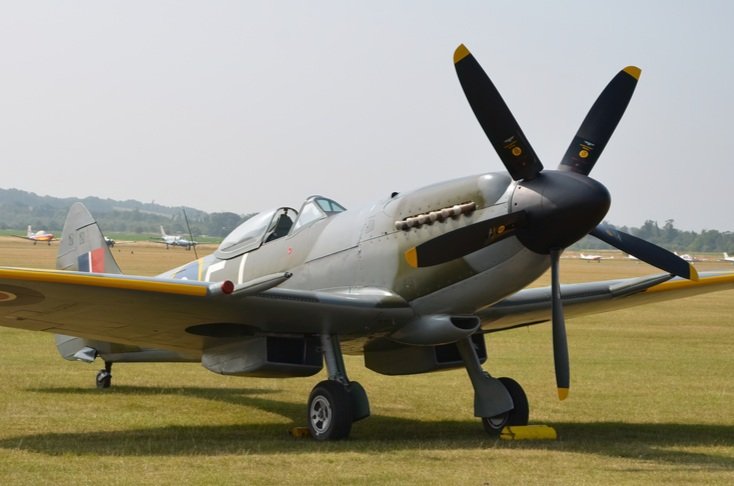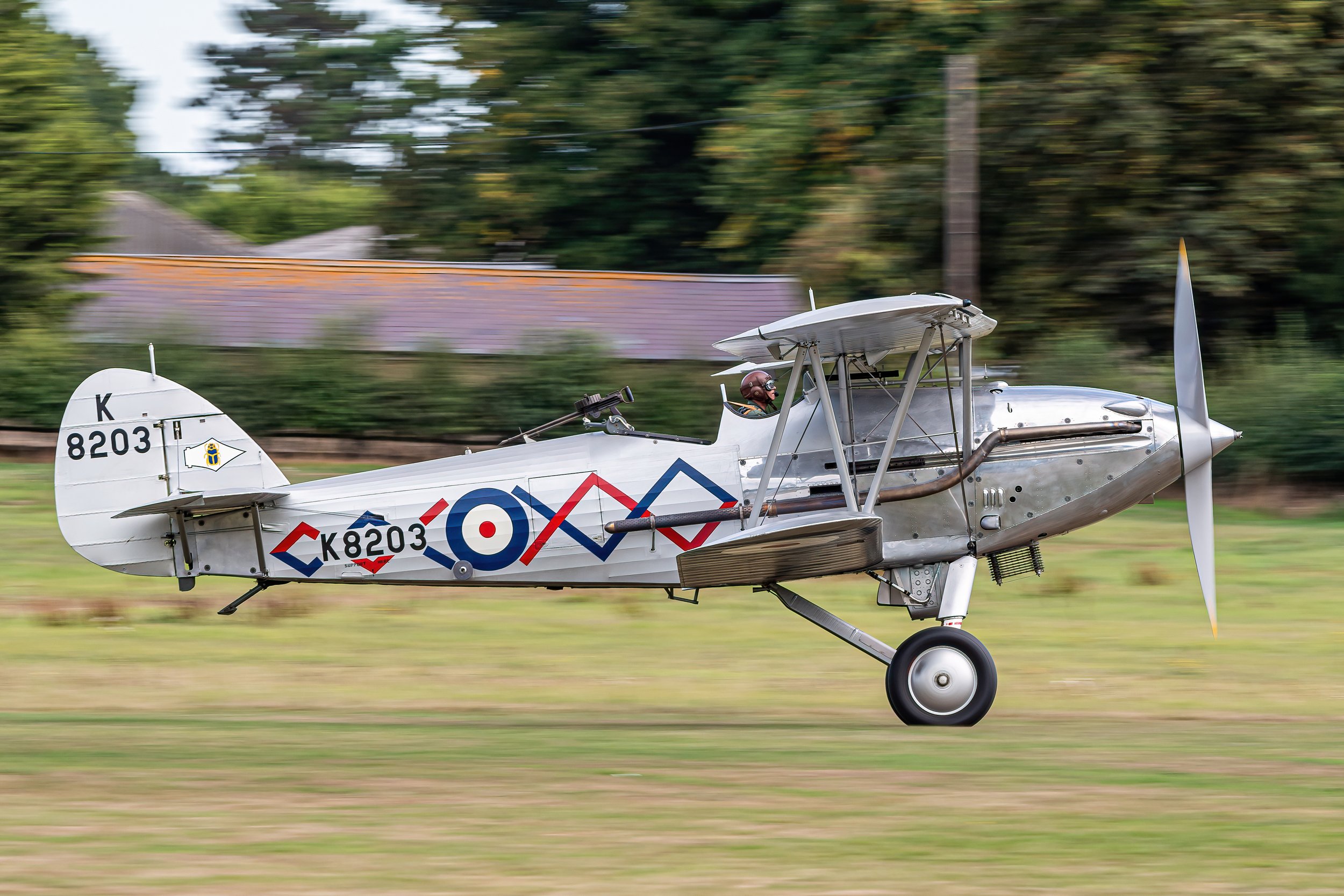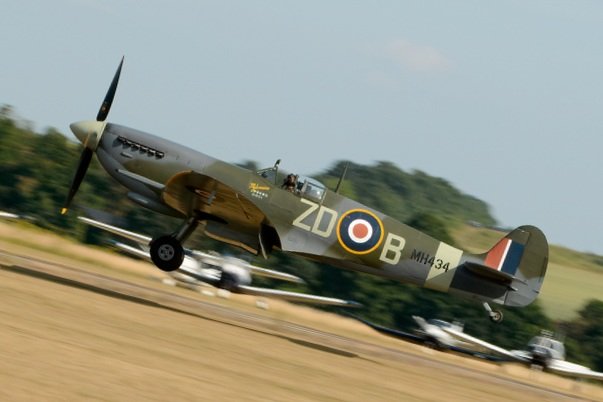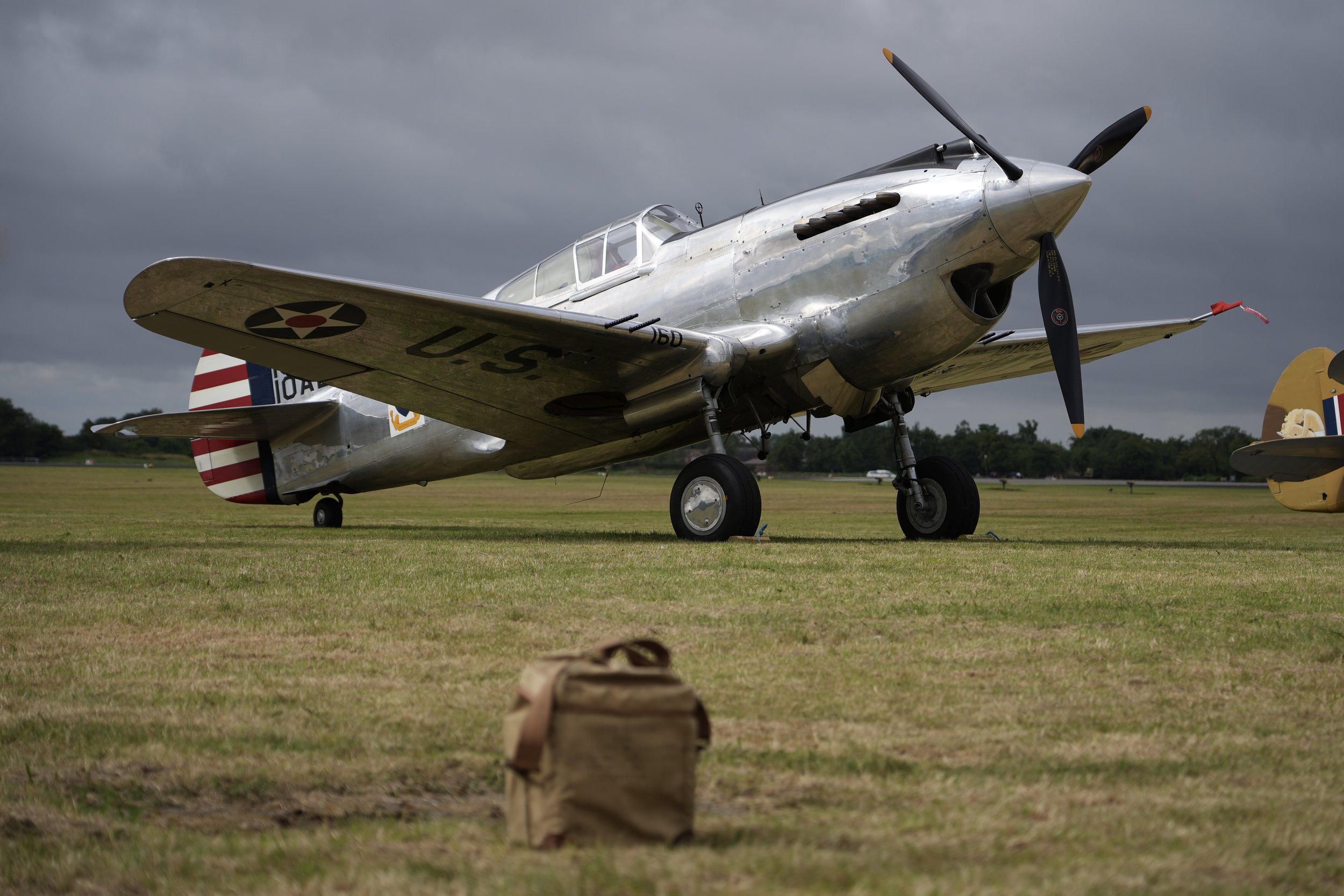Hurricane G-ROBT
Year built
1939
Aircraft
Hurricane I
Base
Duxford Airfield
Hawker Hurricane Mk.I G-ROBT Serial Number P2902 was built in 1939 This Hurricane MK 1 Serial Number P2902 was built by Gloster Aircraft during 1939 under contract no 962371/38/C.23a. It first flew on or around the 20th Oct 1939. By May 1940 P2902 was operational with the 245 Fighter Squadron based at Drem on the East Coast of Scotland engaged in shipping protection patrols.
On the 31 May 1940, carrying the code DX and the individual code R for Robert was piloted by Pilot Officer Kenneth McGlashan. Heading for the French coast to provide cover for the armada of small ships collecting thousands of Allied troops trapped on the shore as the Germans swept across Northern France towards the Channel, he engaged and was hit by fire from a Messerschmitt 109. The badly injured pilot managed to bring the damaged aircraft down to crash land on a beach in Dunkirk, where it remained until recovered by French enthusiasts in 1988.
It was obtained sometime later by warbird operator Rick Roberts who subsequently employed the services of several restorers before finally engaging Hawker Restorations, where it was returned to flying condition. During Operation Dynamo (the evacuation from Dunkirk of British, French and Belgian troops cut off by the German army during the Battle of Dunkirk), the Hawker Hurricanes operated from British bases. Between 26 May and 3 June 1940, the 14 Hurricane units involved were credited with 108 air victories. A total of 27 Hurricane pilots became aces during Operation Dynamo, led by Canadians, Pilot Officer W. L. Willie McKnight (10 victories) and Pilot Officer Percival Stanley Turner (seven victories), who served in No. 242 Squadron, consisting mostly of Canadian personnel. Losses were 22 pilots killed and three captured.
| Back to Top |
Hawker Hurricane I
The Hawker Hurricane is a British single-seat fighter aircraft of the 1930s–40s that was designed and predominantly built by Hawker Aircraft Ltd. for service with the Royal Air Force (RAF). It was overshadowed in the public consciousness by the Supermarine Spitfire's role during the Battle of Britain in 1940, but the Hurricane inflicted 60 percent of the losses sustained by the Luftwaffe in the engagement and fought in all the major theatres of the Second World War.
The Hurricane originated from discussions between RAF officials and aircraft designer Sir Sydney Camm about a proposed monoplane derivative of the Hawker Fury biplane in the early 1930s. Despite an institutional preference for biplanes and lack of interest from the Air Ministry, Hawker refined their monoplane proposal, incorporating several innovations which became critical to wartime fighter aircraft, including retractable landing gear and the more powerful Rolls-Royce Merlin engine. The Air Ministry ordered Hawker's Interceptor Monoplane in late 1934, and the prototype Hurricane K5083 performed its maiden flight on 6 November 1935.
In June 1936, the Hurricane went into production for the Air Ministry; it entered squadron service on 25 December 1937. Its manufacture and maintenance were eased by using conventional construction methods so that squadrons could perform many major repairs without external support. The Hurricane was rapidly procured prior to the outbreak of the Second World War in September 1939, when the RAF had 18 Hurricane-equipped squadrons in service. The aircraft was relied on to defend against German aircraft operated by the Luftwaffe, including dogfighting with Messerschmitt Bf 109s in multiple theatres of action.
The Hurricane was developed through several versions, into bomber-interceptors, fighter-bombers, and ground support aircraft as well as fighters. Versions designed for the Royal Navy known as the Sea Hurricane had modifications enabling operation from ships. Some were converted as catapult-launched convoy escorts. By the end of production in July 1944, 14,487 Hurricanes had been completed in Britain, Canada, Belgium and Yugoslavia.
Hurricane Mk IV was the last major change to the Hurricane. It included the introduction of the "universal Wing", a single design able to mount two 110 or 230 kg bombs, two 40 mm Vickers S guns, drop tanks or eight "60 pounder" RP-3 rockets. Two 7.7 mm Brownings were fitted to aid the aiming of the heavier armament. Despite persistent reports actually fitted with the same Merlin XX as the mark II. All Merlin 27 were modified to Merlin 25 and used in Mosquitoes, there were only 16 production Merlin 24 by the time over 300 mark IV had been delivered. The individual aircraft cards held by the RAF museum reports the final mark IV had Merlin XX. The radiator was deeper and armoured. Additional armour was also fitted around the engine. 524 was built by Hawker between December 1942 and March 1944.
| Back to Top |


| Back to Top |

































